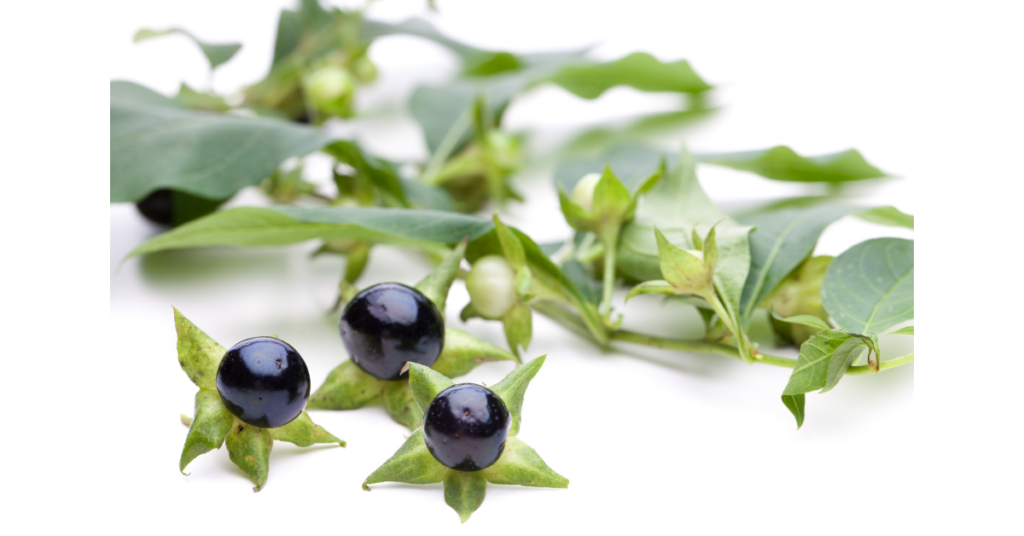Belladonna – Homeopathic Remedy
Belladonna (Atropa belladonna)
Did you know that the Italian for ‘beautiful woman’ is bella donna? Historically, women used belladonna as a ‘beauty aid’ by dropping extracts of this plant into their eyes in order to dilate their pupils, and thus make them appear more beautiful.
This is an extremely poisonous plant, hence its common name ‘deadly nightshade’. It’s shiny black berries may look appetising, but many poor souls have met their maker due to an ill-fated chomp on the ‘Devil’s cherries’. Belladonna also had a place in the witches’ potions of medieval Europe. The plant contains atropine, an alkaloid substance that causes nerve paralysis. It is used in western medicine to stop painful spasms. In homeopathy, belladonna is used for acute conditions of sudden onset, accompanied by wide staring eyes, high fever, throbbing headache, cold extremities, flushed face, and a bright red tongue.
Other names: Deadly nightshade, devil’s cherries, black cherry, naughty man’s cherries, Devil’s herb.
Description and the places it grows in:
Distinctive light-purple, bell-shaped flowers, green oval leaves, black, shiny berries, thick-stemmed, growing to about four feet high. Common throughout most of Europe, except Scotland.
Parts used
Pulped leaves and flowers.
Uses
Homeopaths may prescribe this remedy for:
Infectious diseases such as scarlet fever, measles, whopping cough, chicken pox, mumps, influenza, and the initial stages of pneumonia displaying the following symptoms: Acute and sudden onset, high fever, throbbing headache, red, flushed skin.
Earache displaying the following symptoms: Mainly on right side of head, worse when head is wet or cold.
Boils.
Cystitis (inflammation of the bladder).
People requiring this remedy will feel worse: At night, lying down, on the right side of the body, from loud noises, from bright lights, from touch or pressure, being jarred (i.e., the bed being knocked).
People requiring this remedy will feel better: Keeping warm, bending backwards, sitting upright, standing.
Belladonna-type people (or people suitable for belladonna are) are often fit, healthy individuals, full of energy and social repartee. However, when ill, they can turn into irritable, impatient and sometimes downright nasty characters.
The information given on this site about homeopathic remedies is just a general overview. Classical homeopathy takes all the patient’s symptoms into account and prescribes upon the “Totality of Symptoms”, thus finding the precise remedy that matches the patient’s symptoms perfectly.
Here, at The CMA we recommend that anyone interested in learning more about homeopathy and the fascinating remedies that homeopaths use should take an introduction course to homeopathy, which will help you to understand how to become a good home first-aid prescriber. This is ideal for ‘acute symptoms’. However, if you want to learn more – with a view even to becoming a professional homeopath, who is educated highly enough to be able to treat chronic conditions, you’ll need to be prepared to spend many years learning this vast and fascinating topic – along with anatomy, physiology and pathology, history of medicine, homeopathic philosophy, and much more. You’ll find both kinds of courses here on this site – head to our section on Find a CMA Member and search under CMA Registered Training Schools.


